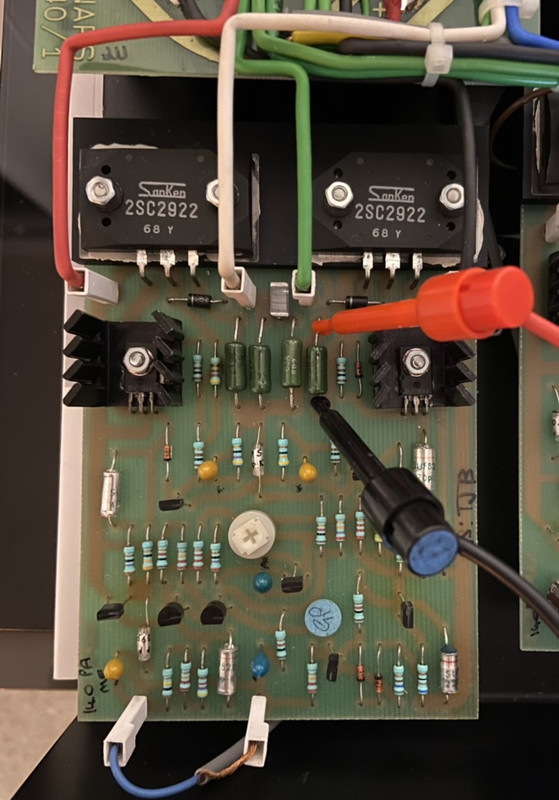The Captain
~~~~~~~~~~

This is how I’m measuring for the bias of the amp in mA’s. It’s currently at 4.2mA when the amp has been on for 30mins with nothing connected but I’m not sure what it officially should be.
I don’t want to change the sound really as I’m very happy with how the amp sounds so I will keep caps to the original spec. Would it be worth changing the small silver caps on the board too? And if so does anyone know what they are?
Thanks for any advice or input on this guys. It’s all a bit of a learning curve for me but without asking I will never learn.
Those silver chaps are polysytyrene (or polysummink) & iirc don't tend to get changed regularly in a service like the ones you've done. They're like films & tend not to degrade.
Btw you're measuring 4mV on your DMM, which equates to 24mA using the C=I/R equation (I think I've got my equation letters in the right order).
I measured my bias across the last green 0.22 resistor, the other end one in the row to yours, but it's probably same-same.
Capt

